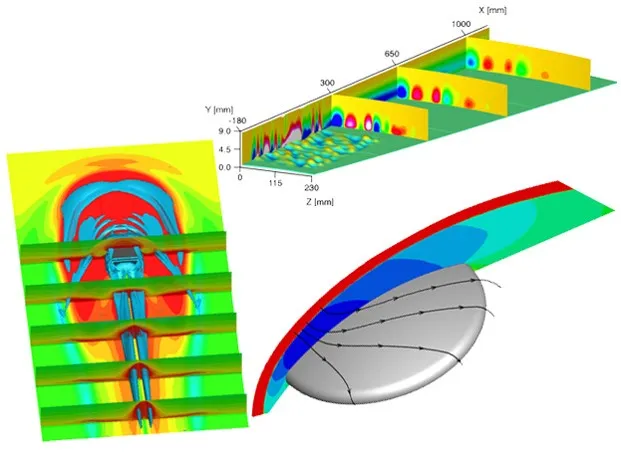High-speed Aerodynamics
Contact Person: Prof. Dr.-Ing. habil. Christian Stemmer
Research Focus:
The high-speed aerodynamics group is mainly concerned with the investigation of the laminar-turbulent breakdown in hypersonic boundary layers. For Mach numbers above 10 as they are common place in re-entry scenarios at high altitides (40-60km), generally speaking, the transition moves forward from the aft to the head of a hypesonic vehicle until it reaches a fully turbulent state at lower altitudes (and lower Mach numbers). In the high-altitude regime, the flow inside the boundary layer is very hot (up to several thousand degree C) and the air dissociates consuming energy. This has an immediate influence on the heat transfer on the relatively cool surface. During the amplification of boundayr-layer instabilities, irregular heat-transfer patterns can arise, which subject the surface to unusually high heat-transfer rates. This can lead to an increase in local ablation and in the worst case, to local failure as this can be a self-energising effect.
With the help of linear stability theory (LST) and direct numerical simulations (DNS) on HPC systems, the instability amplification on blunt re-entry configurations is investigated in the light of chemical and thermochemical nonequilibrium effects. Especially the effects of roughness on the instability generation and amplification is of interest in the group.
Using the Direct Simulation Monte Carlo-method (DSMC) based on kinetic theory of gases, investigations on rarefied flows at high altitudes above 65km are undertaken. We focus on the interaction of the particle flow with ablating surfaces gaining insight into the onset of ablation and potential pattern formation in that flow regime.
